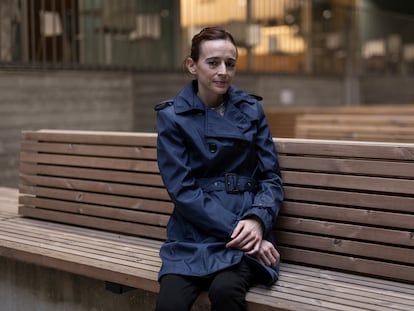The odyssey of combating an entrenched eating disorder: ‘It was killing me’
A pioneering medical unit is proposing a new therapeutic model to treat patients who suffer from a resistant disease that has been evolving for many years
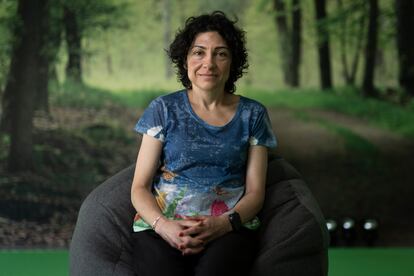
Almost 35 years have passed since anorexia nervosa devastated Begoña V’s body and mind. “A lifetime,” she sighs. She has spent more time dealing with the disease than living without it. The 49-year-old has suffered from the eating disorder since she was a 15-year-old teenager with low self-esteem. That was when she began to eat restrictive diets, becoming immersed in the convoluted, destructive spiral of eating disorders.
Begoña V. has gone through outpatient treatments, psychologists, psychiatrists and several hospital admissions. But the disease is still there, entrenched. “This has nothing to do with food or the body. [Those are] just symptoms… the problem is mental,” she emphasizes.
A couple of months ago, she gave herself a “last chance.” On April 2, she entered the Comprehensive Recovery Unit for adults with highly complex and chronic eating disorders (ED), a pioneering unit co-managed Bellvitge University Hospital and the Sagrat Cor University Hospital, both located in the Barcelona metropolitan area. There, medical experts treat patients who suffer from a disease that has become more and more resistant over the years.
“When they offered me to come here, I was reluctant about the idea,” she recalls. “But I had no way out. It was terrible. My life had no meaning. I self-harmed, I binged, I caused hypoglycemia. [My ED] was killing me. I didn’t give a damn about anything.”
Eating disorders are serious mental illnesses. Anorexia nervosa, bulimia, or binge eating disorders are the best-known, but they’re not the only ones: there are also other more non-specific conditions — known as “atypical” eating disorders — that don’t neatly fit within any of the aforementioned categories. However, these other EDs are equally complex and dangerous. In fact, they can even be more dangerous, according to Fernando Fernández Aranda, a clinical psychologist and director of the Eating Disorder Unit at Bellvitge University Hospital.
“[Patients with these disorders] are more resistant to treatment, because [their condition] seems less severe and less attention is paid to them,” Dr. Aranda affirms. “But [these disorders] last longer and have a greater risk of being chronic.” For example, one can be anorexic without being extremely underweight, be bulimic while binge eating, or engage in purging (vomiting) that’s more spaced out over time.
The disease transcends the stereotype: the majority of people with an eating disorder are women, certainly. But not all of them are young, nor do they all suffer from extreme thinness. And, as Begoña notes, altered eating behavior is only the tip of the iceberg. This is merely a symptom of deeper and more complex damage on a mental level.
Around 4% of the global population suffers from EDs. Most of those affected are women between the ages of 12 and 21. But there are cases — like Begoña’s — that persist for decades. According to Fernández Aranda, “four out of 10 patients don’t recover, or only partially recover.”
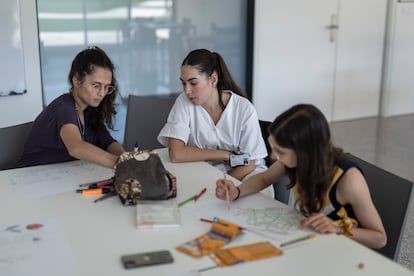
Among this group of patients are those with the most serious cases. While some die from the consequences of the disease, there are also chronically-ill patients who — although they’re not in the most acute and extreme phase of the disorder, in which their lives are in imminent danger — are burdened with chronic health problems that worsen their quality of life. “For those who only partially recover, the disease impacts their daily lives, at the familial, individual and professional levels. They can lead — more or less — a normal life, but generally speaking, they’re isolated and the disorder has an impact on them,” Fernández Aranda details.
Begoña’s condition went unnoticed for many years. “Since I wasn’t very underweight, they didn’t give it much importance… but inside, I felt very bad. I was unhappy,” she explains. She held on for years, until her life began to be in danger and then, finally, she had to be hospitalized. “I was my only way out: I had to be admitted to the hospital, or [I would have died],” she sighs. And, with each subsequent admission, she improved somewhat and regained weight. But her head “didn’t feel right.”
The last time she received generalized care, she already saw problems on the horizon: “I felt very comfortable with the support and affection of the medical team… but when they discharged me, I told them: ‘You’ve released me into the sea without a lifejacket.’ And I relapsed again.”
Some individuals with eating disorders become trapped in a therapeutic and administrative limbo, without specific treatments or resources to address the complexities of their conditions. “Until now, [very little] could be done: [medical professionals] would repeat the treatment, see if they could identify any motivating factors… but we could see that what hadn’t worked before — after it was repeated several times — was never going to work,” the clinical psychologist admits.
The new unit launched by the Bellvitge and Sagrat Cor hospitals tries to fill this gap in care.
In the words of Fernández Aranda, it represents “a hope” for a very specific patient profile: those with an entrenched form of the disease, who have exhausted all therapeutic alternatives after many years of suffering.
“We don’t have to focus on what has failed, such as controlling the eating disorder or [the patient’s] weight. We have to look at what other elements are sustaining the situation,” the scientist notes. He explains that the doctors look at a patient’s motivation, their familial situation, their life expectancy, as well as what objectives they have in the medium-term. “And then, yes, we can also look at core aspects of the eating disorder that haven’t been addressed,” he clarifies. The unique medical unit — located in the Sagrat Cor facilities — has been operating since January 2024 and has around 20 spaces available.
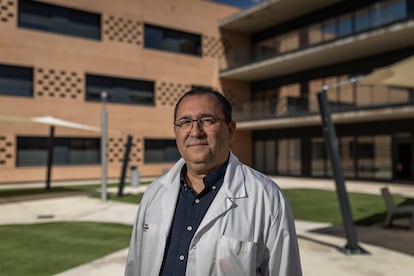
Edurne (not her real name) currently occupies one of them. She’s 31-years-old and, since the age of 15, she’s suffered from anorexia nervosa. “I’ve had many hospital admissions: I entered, gained weight, left… and lost weight again,” she recalls. She’s been in this center for three months and assures EL PAÍS that it’s completely different from the others… the “hardest of all.”
While reflecting on her experience, she says that it’s “a very difficult process, because you take on more responsibility. In other [facilities], the rules are very strict. But here, you decide whether to do something or not. They set rules so that there’s no risk of malnutrition, of course… but you decide everything else. This freedom they give you means that you have to take on responsibility. And it’s very positive, because when you leave, you won’t have someone telling you to eat. You’ll have to do it because you want to.”
Nuria Jaurrieta-Guarner — coordinator of the new unit — highlights that collective responsibility is key in this therapeutic approach. “We must approach [the disorder] from a non-control perspective and work hard on developing the responsibility of the patient within this process of change.” In fact, Fernández Aranda explains, weight doesn’t set the pace of the therapeutic process: “While other units determine admissions based on weight, here, they have admissions regardless of weight, because this is another therapeutic tool. And discharges aren’t subject to the weight that a patient does or doesn’t regain. Perhaps, for instance, they’ve simply been stuck at a low weight (not in a critical situation, of course) for years… or they have a more or less normal weight, but they’re still not discharged because there are objectives that continue to be worked on.”
The therapeutic journey lasts between three and four months. This period of time is focused on recovery at all levels: from muscle recovery with a physiotherapist, to the recovery of the person’s mental health and their social skills via psychological support. “There’s an initial adaptation phase, where the patients arrive at the unit and motivational aspects are worked on. Then, there’s another phase of empowering the person and working with their family. And, finally, there’s a pre-discharge stage, where social bonds and psychosocial recovery are worked on… skills are developed to be used outside the Eating Disorder Unit,” the coordinator explains. Upon publication of this report, seven patients have been admitted, while several cases are being studied.
Not just anyone can enter: the unit is only designed for chronically-ill patients, who have exhausted all therapeutic alternatives in hospital ED units. It is, in fact, these alternative services that have the power to refer the most appropriate cases to the new comprehensive unit, with which they work in a coordinated manner. And, after three or four months of hospitalization under the supervision of Dr. Jaurrieta-Guarner, the patients continue to be monitored in the original eating disorder recovery units that referred them.
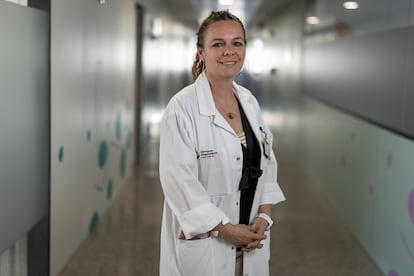
Edurne is about to start a paid internship. She’s a little afraid of returning to the world of work and not enjoying it. She tells EL PAÍS that this is what the disease is all about: “A fear, a can’t, that limits your day-to-day life.” But she wants to try. She wants to see her friends and she wants to travel. “Before [this treatment], I had no future. I lived one day at a time and that was it. I didn’t want to think too much, because I didn’t know if there would be a tomorrow. But now I miss my life.”
Over the past two months, Begoña has also begun to see a ray of hope. “I’ve discovered things about myself that I didn’t know. There used to be no color — I was lost, I didn’t have any goals. But now, I can see things a little clearer: I would like to get closer to my daughter, go back to my job and enjoy it, play sports without feeling obliged and eat without thinking about whether I’m going to gain weight.”
Sitting in the room where the patients eat and do activities, Begoña speaks to EL PAÍS with watery eyes. “I’ve spent weeks feeling terrible, feeling like I wanted to run away. But I stayed because I wanted to heal and experience what I’ve never felt: happiness.” For the first time in her interview, she smiles. “I want to have a better life.”
Sign up for our weekly newsletter to get more English-language news coverage from EL PAÍS USA Edition
Tu suscripción se está usando en otro dispositivo
¿Quieres añadir otro usuario a tu suscripción?
Si continúas leyendo en este dispositivo, no se podrá leer en el otro.
FlechaTu suscripción se está usando en otro dispositivo y solo puedes acceder a EL PAÍS desde un dispositivo a la vez.
Si quieres compartir tu cuenta, cambia tu suscripción a la modalidad Premium, así podrás añadir otro usuario. Cada uno accederá con su propia cuenta de email, lo que os permitirá personalizar vuestra experiencia en EL PAÍS.
¿Tienes una suscripción de empresa? Accede aquí para contratar más cuentas.
En el caso de no saber quién está usando tu cuenta, te recomendamos cambiar tu contraseña aquí.
Si decides continuar compartiendo tu cuenta, este mensaje se mostrará en tu dispositivo y en el de la otra persona que está usando tu cuenta de forma indefinida, afectando a tu experiencia de lectura. Puedes consultar aquí los términos y condiciones de la suscripción digital.
More information
Archived In
Últimas noticias
Most viewed
- Sinaloa Cartel war is taking its toll on Los Chapitos
- Oona Chaplin: ‘I told James Cameron that I was living in a treehouse and starting a permaculture project with a friend’
- Reinhard Genzel, Nobel laureate in physics: ‘One-minute videos will never give you the truth’
- Why the price of coffee has skyrocketed: from Brazilian plantations to specialty coffee houses
- Silver prices are going crazy: This is what’s fueling the rally

